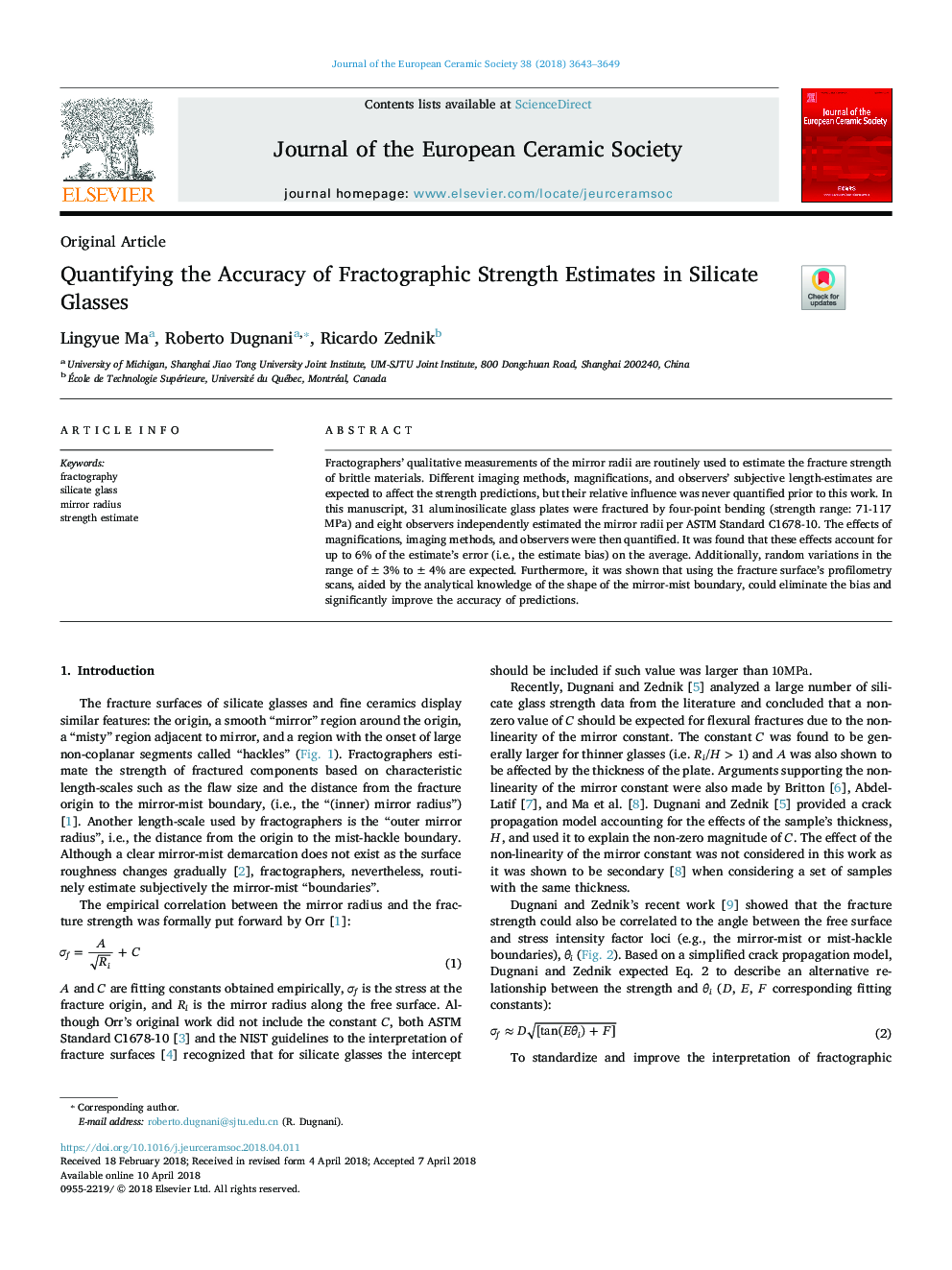| Article ID | Journal | Published Year | Pages | File Type |
|---|---|---|---|---|
| 7898122 | Journal of the European Ceramic Society | 2018 | 7 Pages |
Abstract
Fractographers' qualitative measurements of the mirror radii are routinely used to estimate the fracture strength of brittle materials. Different imaging methods, magnifications, and observers' subjective length-estimates are expected to affect the strength predictions, but their relative influence was never quantified prior to this work. In this manuscript, 31 aluminosilicate glass plates were fractured by four-point bending (strength range: 71-117 MPa) and eight observers independently estimated the mirror radii per ASTM Standard C1678-10. The effects of magnifications, imaging methods, and observers were then quantified. It was found that these effects account for up to 6% of the estimate's error (i.e., the estimate bias) on the average. Additionally, random variations in the range of ±3% to ±4% are expected. Furthermore, it was shown that using the fracture surface's profilometry scans, aided by the analytical knowledge of the shape of the mirror-mist boundary, could eliminate the bias and significantly improve the accuracy of predictions.
Keywords
Related Topics
Physical Sciences and Engineering
Materials Science
Ceramics and Composites
Authors
Lingyue Ma, Roberto Dugnani, Ricardo Zednik,
